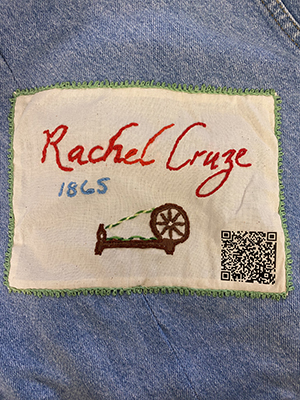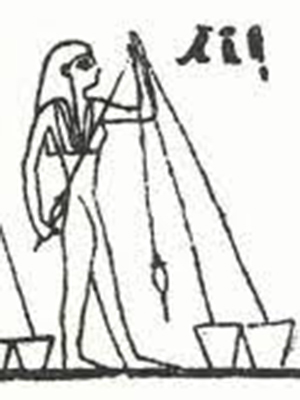Rachel Cruze
“I was born on the ninth of March 1865, on the farm of Major William Holden, at Strawberry Plain, Knox County, Tennessee. My father was William Holden, Jr., the youngest child of Major Holden. My mother, Eliza Mobley was the colored cook. Until I was about 12 years old, I looked upon Miss Nancy as my mother, when in reality she was my white grandmother. I lived with the old Major’s family until I was that age, when I was sent over to the Meeks’ place to live with my mother and step-father. Then too, by that time, the Major’s oldest son John had married a woman who believed in beating the slaves and slapping them around. She slapped me once, and I can tell you the old Major cussed her out.
“I lived in the Old Major’s house as a member of the family all those years. I was their baby, and my first recollections are of sleeping in a little bed at the foot of the one occupied by the Major and Miss Nancy. Miss Nancy took especially good care of me, always looking me up to see what I was doing. She was particularly interested in my clothes, and for years after I left and was living with Mamma, she clothed me.
The material for the cotton clothes worn on the farm in summer was woven right in our own kitchen. We bought the raw cotton, usually, but sometimes we would grow a small patch. Then we would card it, spin it, and weave it on the big loom in the kitchen. I have spun many a broach. They’d take it off and wind it on a reel, and make a great hank of thread- there would be four cuts in a hank. They would first size the thread by dipping it in some solution, and then when it was dry, they would dye it. Dyestuffs would be gotten from the barks and roots of different trees, and with these we would be able to make red, brown, and black dyes. We would then weave the thread into jeans, a heavy cotton for men’s coats and pants, or the lighter linsey for women’s clothes.” – Rachel Cruze
 Sabrina Goldsmith ’25
Sabrina Goldsmith ’25
For millennia, humans have made thread from plant and animal fibers. At first, grasses were twisted on the thigh or rocks to make twine for traps and tying up bundles. Then, drop spindles were used, employing the force of gravity to spin more delicate fibers together. In China and India, hand powered wheels were invented and even thinner thread could be produced using silk. Next came the treadle spinning wheel, which left both hands free to guide the fibers while a foot pedal pumped the wheel. At the dawn of the Industrial Revolution in 1764, Englishman James Hargreaves invented the spinning jenny which increased production by adding multiple spindles. Even though spinning thread became faster and more mechanized as first water powered, then steam and eventually massive room sized industrial electric spinning machines developed, people still continued to use spinning wheels in their homes.
Sources
- Archive of Folk Song, Music Division, Library of Congress
- Spinning | Heritage Crafts
- The Evolution of the Spinning Wheel | thoughtco.com
